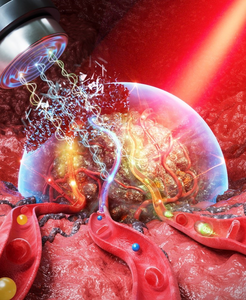Researchers at POSTECH have reviewed recent innovative research on contrast-enhanced photoacoustic imaging over the last four years in a bid to identify and overcome the limitations of the imaging technique. Despite the benefits of photoacoustic imaging as a biomedical imaging modality, such as enhanced optical contrast and ultrasonic spatiotemporal resolution, the technique faces physical and practical challenges. Physical challenges include low signal-to-noise ratio (SNR) and decreased image contrast due to strong optical attenuation, while practical challenges include a lack of effective cell-specific targeting and difficulties in developing clinically translatable agents. To overcome these challenges, contrast-enhancing agents are needed, accompanied by high-performance image acquisition systems. The POSTECH research team surveyed the latest four years of research to overcome the physical and practical challenges of photoacoustic imaging and provided a detailed analysis of promising strategies, including photoswitching agents, near-infrared-II agents, super-resolution localization agents, and micromotor agents. The study was supported by several grants, including funding from the National Research Foundation of Korea (NRF) and the Korea Medical Device Development Fund, which was funded by the Korean government.
Advancements in Contrast-Enhancing Agents for Photoacoustic Imaging
Recent studies have shown that photoacoustic imaging holds great potential as a biomedical imaging modality. Despite its benefits, such as enhanced optical contrast and ultrasonic spatiotemporal resolution, the imaging method faces physical and practical challenges.
A research team at POSTECH, led by Professor Chulhong Kim, has reviewed innovative research on contrast-enhanced photoacoustic imaging conducted over the past four years. The team’s findings, published in Chemical Reviews, aim to identify the limitations of conventional photoacoustic imaging and facilitate the development of the field.
Physical limitations include low signal-to-noise ratio (SNR), decreased image contrast due to strong optical attenuation, and a lower bound on spatial resolution when imaging deep tissues. Practical hurdles include a lack of effective cell-specific targeting due to low delivery efficiency and difficulties in developing clinically translatable agents.
To overcome these challenges, contrast-enhancing agents are needed, accompanied by high-performance image acquisition systems. The POSTECH research team surveyed the latest four years of research to overcome the physical and practical challenges of photoacoustic imaging, specifically SNR/contrast, spatial resolution, targeted delivery, and clinical application. The team provides a detailed analysis of promising strategies for addressing each challenge, such as photoswitching agents, near-infrared-II agents, super-resolution localization agents, or micromotor agents.
Future research directions suggested by the team aim to enable next-generation contrast-enhanced photoacoustic imaging. It is essential to identify these limitations and develop contrast-enhancing agents to advance the field of photoacoustic imaging.
Funding for Photoacoustic Imaging Research in Korea
The study on contrast-enhanced photoacoustic imaging conducted by the research team at POSTECH was supported by several grants. The National Research Foundation of Korea (NRF) provided funding, along with grants from the Ministry of Science and ICT (MSIT), the Ministry of Education, the Institute of Information and Communications Technology Planning and Evaluation (IITP), the Korea Evaluation Institute of Industrial Technology (KEIT), and the Korea Medical Device Development Fund. The latter was funded by the Korean government, including the MSIT, the Ministry of Trade, Industry and Energy (MOTIE), the Ministry of Health and Welfare, and the Ministry of Food and Drug Safety.
Disclaimer: The accuracy of news releases posted to EurekAlert! by contributing institutions, including the information regarding funding sources, is not the responsibility of AAAS and EurekAlert!
Don’t miss interesting posts on Famousbio









